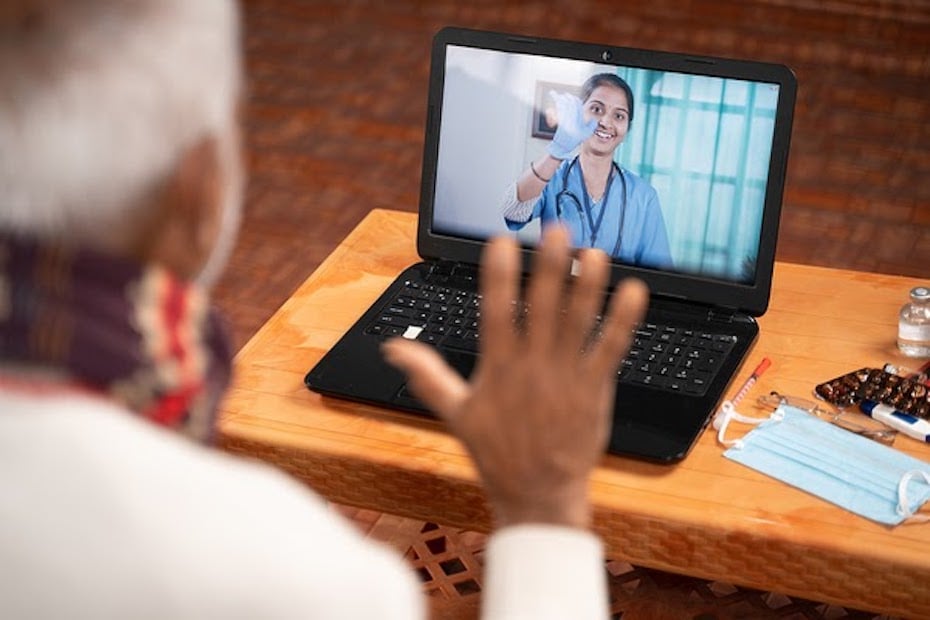Even at the beginning of 2021, there are clear trends for healthcare providers that will shape the coming year. Some of these trends have been heavily influenced by the events of 2020, while others are due to developments that have been percolating for a few years. There are some unique trends, yet they’re connected to the broader theme of digital transformation.
Discover the trends that will shape healthcare in 2021, as well as the technology that will enable you to implement these trends at your practice.
Trend 1: Telehealth will continue to be a popular choice
In 2020, a global healthcare crisis spread across North America. To slow the spread, many healthcare providers chose to offer telehealth services so that continuity of care wouldn’t be jeopardized.
However, even before 2020, telehealth was slowly gaining traction. A 2017 survey revealed that two-thirds of healthcare consumers would prefer to see a doctor through a virtual visit. In addition, 20% of patients would be willing to switch providers so they could have the option of virtual visits.
Telehealth will remain a popular choice in years to come because it’s convenient for patients. They can attend an appointment in the comfort of their own home, saving them time and money as well as offering a better patient experience.
Trend 2: There will be an embrace of digital transformation across the healthcare field
This trend is broader and arguably encompasses telehealth. To understand the impact of this trend, let’s first examine the concept of digital transformation.
The Enterpriser’s Project defines digital transformation as “the integration of digital technology into all areas of business resulting in fundamental changes to how businesses operate and how they deliver value to customers.” What does that mean for healthcare?
It means that healthcare organizations implement solutions that change the way these organizations operate, so they can provide a smoother, more efficient, and cost-effective patient experience. It’s important to note that implementing a new technology alone doesn’t launch a digital transformation; the technology has to fundamentally change a process to make it more efficient.

What does digital transformation look like in healthcare organizations?
To illustrate digital transformation within a healthcare organization, consider this real-life example.
When lockdowns shuttered businesses in 2020, Dr. Gina Dorfman began teaching telehealth techniques to other dentists. Yet, within her own practice, her telephone system wasn’t advanced enough to allow her to practice teledentistry. Dr. Dorfman turned to RingCentral’s healthcare communications platform to hold virtual triage appointments.
Dr. Dorfman’s shift to a telehealth platform dramatically altered a business process—for the better. It represented a new and improved way of running her business and created a positive patient experience at a difficult time.

Trend 3: Healthcare will shift to the cloud
As part of digital transformation within healthcare, 2021 will be the year in which many healthcare organizations move more of their operations into the cloud. Healthcare IT experts believe the financial pressures of the global healthcare crisis (patients delaying elective surgeries, a lower reimbursement rate for telehealth services, and other economic pressures) will make the cloud a more attractive option than more expensive on-premises solutions.
One way in which healthcare organizations can move to the cloud and offer telehealth services is through a healthcare communications platform. Healthcare communications platforms run in the cloud and allow patients, providers, care teams, and payers to connect quickly and easily for improved outcomes and an enhanced patient experience.
Trend 4: There will be greater demand for multi-channel patient experiences
This trend is also tied to the broader theme of digital transformation. Today’s patients are accustomed to multi-channel experiences—they browse their smartphones for better deals as they stand in a store, they start conversations on the phone and finish them in a chat, and they conduct impromptu video calls with family, friends, and coworkers. They expect to do the same with their healthcare providers and healthcare organizations.
How can healthcare leaders implement this trend in their organizations? One step is to put a healthcare communications platform in place. A healthcare communications platform would enable patients to reach out to providers and payers through chat, phone, email, and videoconference.
Trend 5: There is a renewed emphasis on efficiency within healthcare organizations
It’s not news that the American healthcare industry does not operate at peak efficiency. A landmark 2010 study uncovered $12 billion in waste at American hospitals each year due to poor communication. One of the solutions for this problem is investing in collaborative communications solutions.
“Collaborative communications” mean that healthcare providers, patients, and payers collaborate through open, intelligent workflows to create a seamless experience. An example of a collaborative communications solution would be a healthcare communications platform.
A healthcare communications platform is versatile—it connects patients, providers, and payers through a secure framework so they can easily share information. For example, if a patient has a question about a claim, he can contact his insurance company; the agent could quickly pull up his file, and if there’s an issue (such as delayed claim approval), the agent could loop in a colleague in another department to figure out the problem in real-time. The power of collaborative communications reduces inefficiency by making it faster and simpler to share information.
Trend 6: The call for pricing transparency grows louder
The Centers for Medicare and Medicaid Services (CMS) mandated American hospitals must increase price transparency by January 1, 2021. It will take an average of 150 hours for each hospital to review and post their standard charges, according to a CMS estimate.
Collaborative communications solutions can speed up this process. With a healthcare communications platform, employees can easily share accurate information securely. A healthcare communications platform removes the silos and reduces inefficiencies that lengthen this process.
RingCentral’s telehealth platform helps you implement these trends at your organization
RingCentral’s telehealth platform offers robust collaborative communications capabilities that enable you to bring the latest trends (telehealth, the shift to the cloud, increased efficiency, and digital transformation) to your healthcare organization. See how cloud communications can transform your healthcare organization. Request a demo.
Originally published Mar 22, 2021, updated Jul 25, 2024





